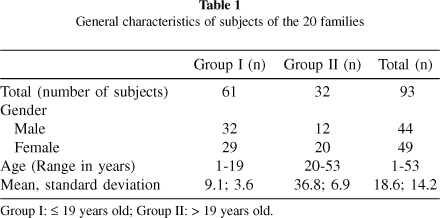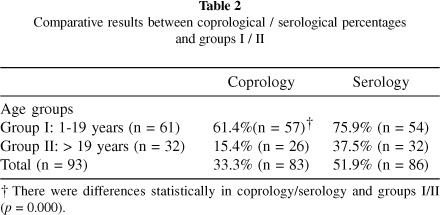Abstracts
High prevalence rates of human fascioliasis have been described in several regions of Peru. We surveyed 20 families in an endemic area of Peru in order to determine the proportion of infection with F. hepatica in relatives of diagnosed subjects and in order to identify associated risk factors. The study included feces and blood samples of 93 subjects. Ages ranged from one to 53 (mean = 18.6; SD = 14.2). The overall prevalence of fascioliasis by fecal examinations was 33.3% (n = 83) and by serology, 51.9% (n = 86). The prevalence in age group I (< 19 years old) by coprological and serological tests was 61.4% and 75.9%, respectively; in group II (> 19 years old) 15.4% and 37.5%. The main associated risk factor with fascioliasis was eating salads (OR = 3.29, CI = 1.2 - 9.0, p = 0.02). In conclusion, human fascioliasis is highly prevalent in the relatives of index cases and the most significant risk factor of acquiring fascioliasis in the family is eating salads in endemic areas.
Fascioliasis; Relatives; Index case; Risk factors; Salads; Peru

 Fascioliasis in relatives of patients with Fasciola hepatica infection in Peru
Fascioliasis in relatives of patients with Fasciola hepatica infection in Peru

